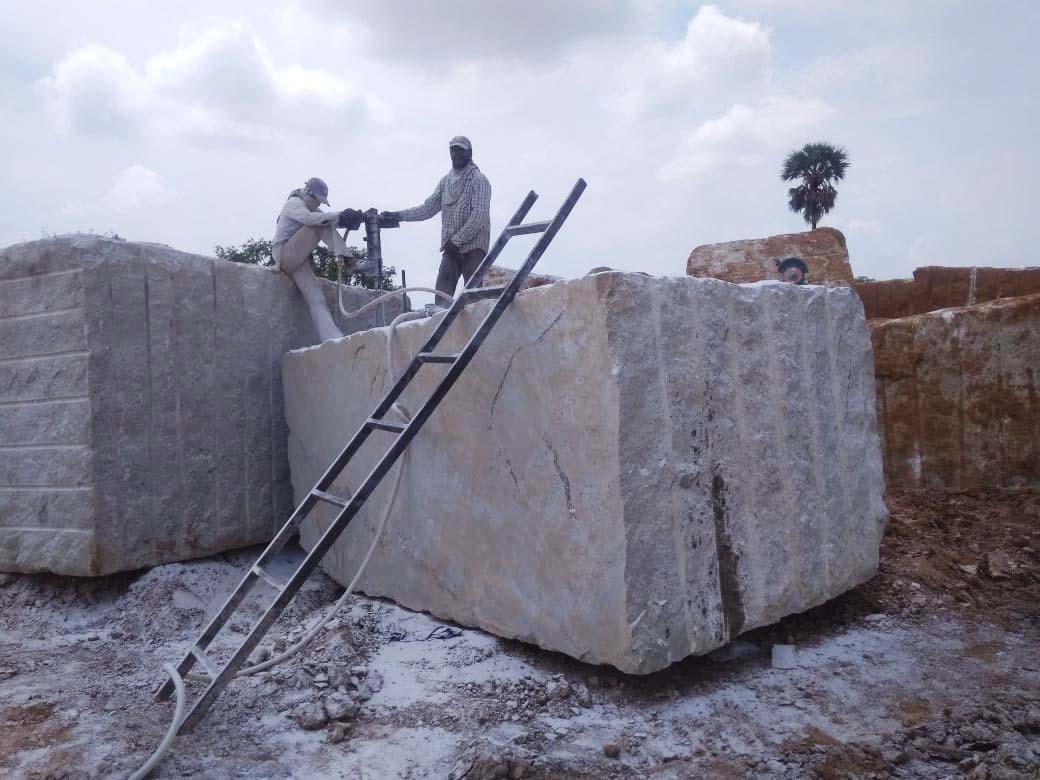Unveiling Granite Quarries in South Africa Heritage: A Trip Through Quarries
Unveiling Granite Quarries in South Africa Heritage: A Trip Through Quarries
Blog Article
Revealing the Mysteries of Granite Quarrying: Where Strength and Style Meet
The globe of granite quarrying is a realm where the raw strength of nature merges with human creativity to produce frameworks that stand the examination of time with an air of sophistication. From the depths of quarries to the precise sprucing up in workshops, the process of changing granite into building wonders is a complex dancing of practice and technology. As we peer into the depths of this ancient craft, we begin to discover the hidden details that form the really significance of our developed environment.
The Beginnings of Granite Quarrying
In the record of building history, the origins of granite quarrying are shrouded in a tapestry of old craftsmanship and geological wonders. Going back to old Egypt and Mesopotamia, the extraction of granite from quarries noted the beginning of a trip that would eventually cause the production of some of the world's most iconic structures.
Granite quarrying's roots can be traced to the competent artisans that identified the rock's durability and aesthetic charm. Through a combination of primitive devices and sheer decision, these early quarry employees discovered granite blocks that would certainly end up being the structure blocks of people.
As people advanced, so did the methods of quarrying granite. The Romans, renowned for their design expertise, developed sophisticated approaches for drawing out granite to build monuments, temples, and roadways that stood the test of time.
The heritage of these old quarrying practices remains to shape contemporary design, with granite remaining a symbol of stamina and elegance in construction jobs around the world. (granite quarries in south africa)
Devices of the Quarrying Profession
The development of granite quarrying strategies from ancient people to modern times highlights the critical duty played by the devices of the quarrying trade in forming the sector's methods. In ancient times, quarrying devices were rudimentary, typically containing blades, hammers, and wedges made from materials like bronze or iron. These tools required considerable manpower and time to extract granite obstructs from quarries.

In addition, the intro of pneumatic devices and high-powered machinery has substantially lowered the physical labor required in quarrying procedures, improving employee security and productivity. As the quarrying industry remains to introduce, the tools of the profession continue to be at the leading edge of driving progression and shaping the future of granite extraction.
Drawing Out Blocks of Granite
Utilizing accuracy equipment and advanced techniques, the removal of granite obstructs from quarries has actually ended up being an innovative procedure in the modern quarrying sector. The first step involves recognizing the location and dimension from this source of the granite down payment to figure out the most efficient removal technique. As soon as an appropriate website is selected, the removal procedure begins with the drilling of holes for the positioning of explosives. Regulated blowing up methods are after that employed to disintegrate the granite into convenient sections.

Sprucing Up and Finishing Techniques
To attain a flawless surface on granite blocks, skilled artisans use a collection of precise polishing and completing methods. After the first extraction and shaping processes, the granite obstructs undertake a comprehensive sprucing up phase to boost their all-natural appeal and longevity. One typical technique utilized in brightening granite is diamond abrasion, where industrial rubies are utilized to grind and brighten the rock to you can try here a smooth coating. This process not only develops a lustrous surface area but likewise guarantees uniformity in shade and appearance throughout the granite block.
Along with sprucing up, ending up strategies are related to further refine the granite's appearance. These strategies might why not try here include flaming, developing, or cleaning, each offering distinct textures and finishes to suit different visual choices. Flaming, for example, entails revealing the granite surface to heats to produce a harsh, distinctive coating, ideal for outdoor applications where slip-resistance is essential. Honing, on the other hand, offers a matte surface that is smooth to the touch, ideal for interior counter tops and flooring. By thoroughly choosing and applying these polishing and finishing techniques, artisans can transform raw granite obstructs into charming items that display both strength and beauty.

Environmental Impact and Sustainability
With the expanding emphasis on environmental consciousness in the sector, granite quarrying practices are significantly inspected for their impact on natural sources and lasting sustainability. Furthermore, the transportation of granite from quarries to refining centers generates carbon discharges, further adding to environmental destruction.
To minimize these influences and make certain sustainability in granite quarrying, industry stakeholders are taking on different actions. Carrying out innovative technologies to minimize energy consumption and water usage, recovering quarried land for eco-friendly restoration, and promoting liable sourcing practices are some strategies being employed. Accreditations such as the Woodland Stewardship Council (FSC) and the Management in Power and Environmental Design (LEED) help customers recognize environmentally friendly granite products.
Final Thought
Finally, granite quarrying is a procedure that requires specialized tools and strategies to extract blocks of granite and polish them to a high level of surface. While the environmental influence of quarrying can be significant, efforts are being made to enhance sustainability practices in the sector. Overall, granite quarrying is a fragile equilibrium between taking advantage of the toughness and elegance of this all-natural stone while decreasing its impact on the atmosphere.
Report this page